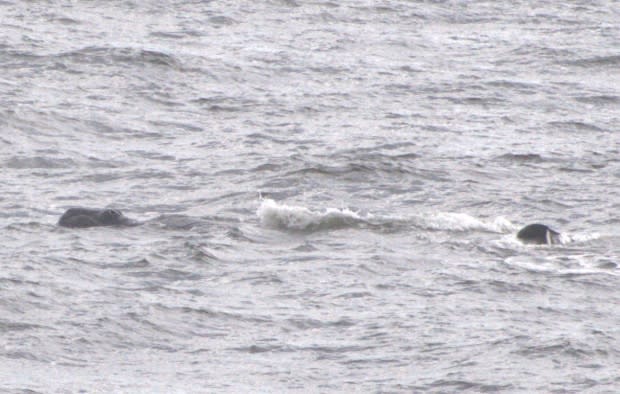3rd right whale calf spotted off Florida coast excites researchers
A third North Atlantic right whale calf has been spotted by a state of Florida research team off the coast of northern Florida, giving hope to scientists after a slow start to the season.
"Every calf is exciting," said Philip Hamilton, research scientist at the Anderson Cabot Centre for Ocean Life at the New England Aquarium.
"This population has been struggling to recover for a long time and in recent years has been hit by increased injury and death. The births are our hope."
Calving season usually starts in December and lasts until March, with the bulk of the births happening in January and February.
The first calf of this season was spotted on Dec. 28 in the waters between Florida and Georgia, and the second one was seen this past Sunday.
Hamilton said the latest mother had given birth to as many as eight calves before, and is one researchers had been watching since 1982, calling her one of the "most dependable mothers."
Slowdown in reproduction
Healthy right whales typically give birth every three years, said Hamilton.
But in 2017, scientists noticed that members of the endangered species were giving birth at 10-year intervals.
"One of our concerns with the lack or slowdown in reproduction is it seems these animals aren't in good enough shape to give birth," he said.
There has been a dramatic shift in food availability in the last few years, forcing many whales to migrate from the Bay of Fundy in the summer to the Gulf of the St. Lawrence.
"It's very possible they're not finding enough food to get them in robust condition to support a calf," said Hamilton.

He said the injuries the mammals suffer — from ship strikes and entanglements in fishing gear — can slow down or stop their reproduction.
"Seeing whales give birth again means that at least some of them are healthy enough that they can reproduce."
In 2017, only five calves were observed, a notable drop compared with previous years, when the number of new calves spotted annually reached 15 to 20.
No deaths in 2018
North Atlantic right whales use the warm waters off Florida and Georgia as a nursery for their young, before they move up the East Coast in the summer.
Canada implemented new measures last summer to try to protect right whales, after 12 were reported dead in Canadian waters in 2017, along with another five in U.S. waters.
No North Atlantic right whales died in Canadian waters in 2018.
"[Things] are definitely looking up compared to the end of 2017," Hamilton said. "We're not out of the woods by any means … but it's certainly a good start."

